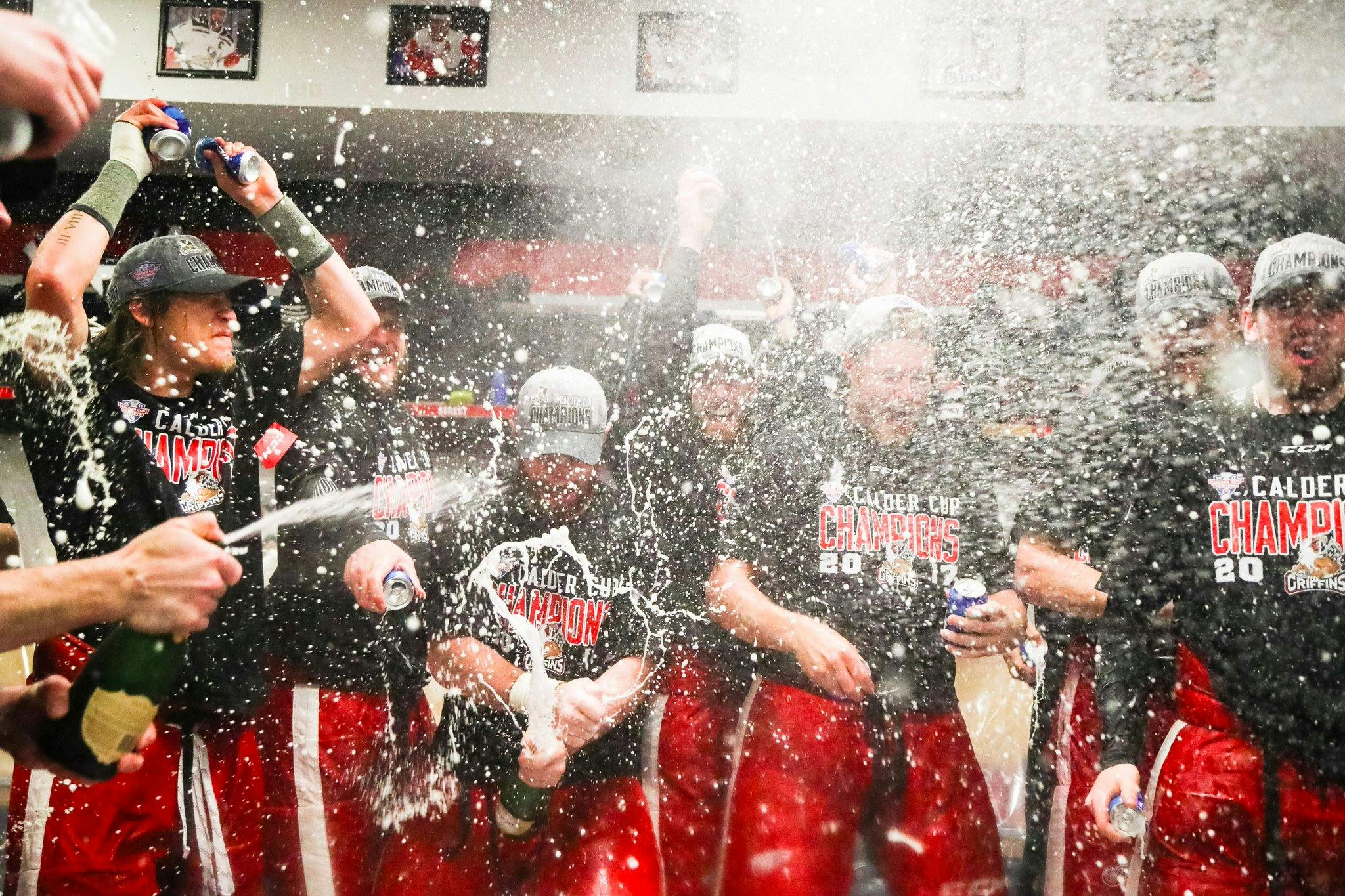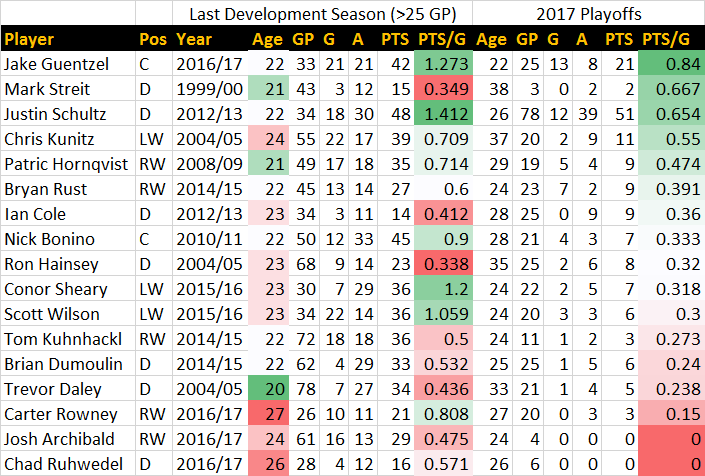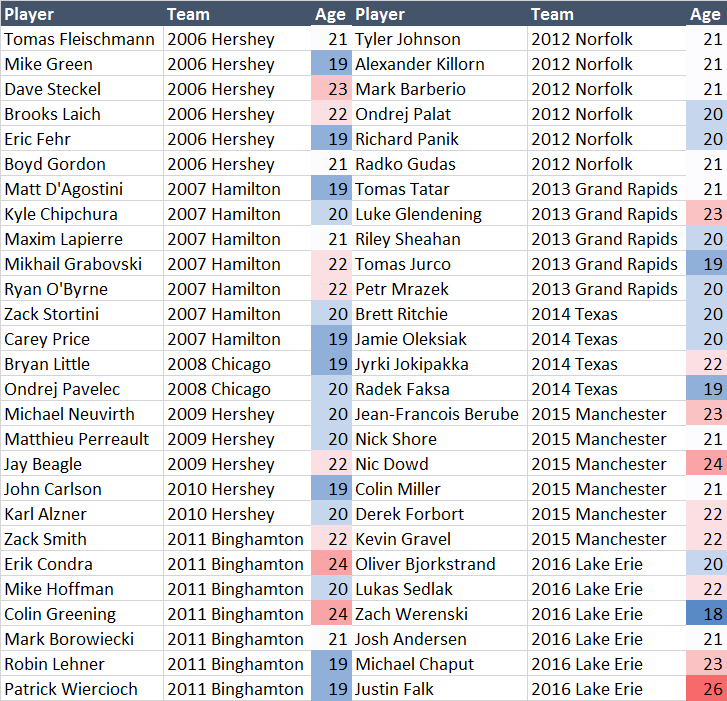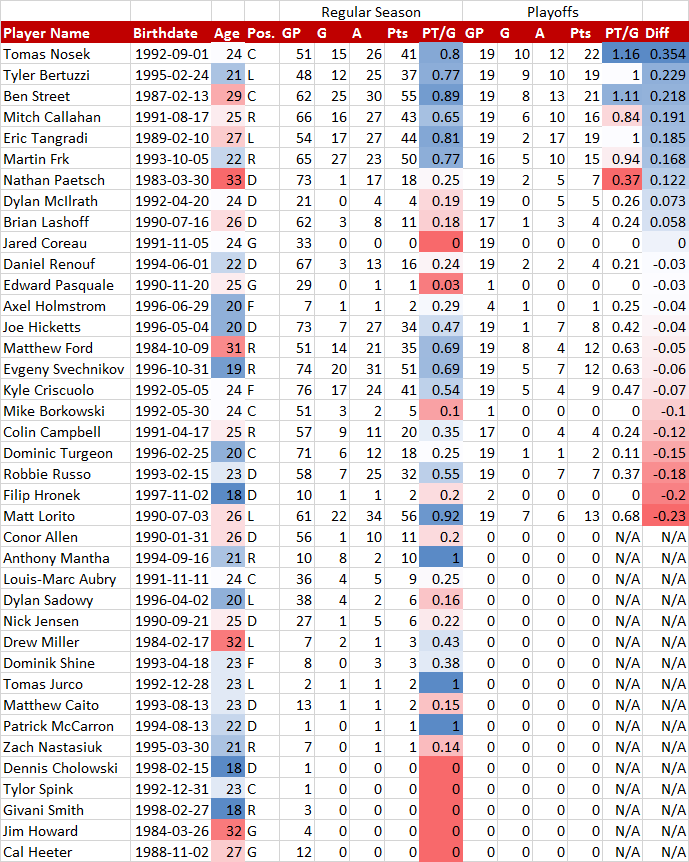Why the Griffins’ Calder Cup win likely means little for the Red Wings’ future

Earlier this week, the Grand Rapids Griffins reached the highest mountain in the American Hockey League, winning the 2017 Calder Cup over the Syracuse Crunch. It was an inspiring run; Detroit’s minor-league affiliate went undefeated at home and had a final record of 15-4, effectively steamrolling their competition.

Red Wings fans are, of course, excited. Winning in a developmental league bodes well for the big club down the line, right? Especially when your big club saw it’s first significant hiccup year in decades; knowing you have reinforcements down the line is a very good thing. Just look at the Pittsburgh Penguins; as the AHL pointed out the other day, 92% of their roster played in the league at some point. Surely that translates here too, right?
Unfortunately, the statistic is a bit misleading: some of the best players on the list (Phil Kessel, Kris Letang, Carl Hagelin, Olli Maatta, Matt Cullen) were merely around for a cup of coffee. Kessel’s “AHL Development” was only two games! But they still had a full cast. It also doesn’t include their biggest guns (Sidney Crosby, Evgeni Malkin), who skipped the league entirely.

Looking at the rest of the skaters, you notice a bit of a pattern. Those who made the biggest impact on Pittsburgh’s roster graduated from the AHL at a pretty young age; typically between 20 and 23. The exceptions to the rule here are Chris Kunitz (an outlier as far as top talents being passed over, who also played that extra season in a lockout year) and the bottom trio, who came in more as injury replacements than as long-term players.
You can see a similar pattern when looking at players who went from playing over half the playoff games for a Calder Cup Champion to being regular NHLers. Here’s the full list of those guys from the cap era, with a little bit of benefit of the doubt being afforded to players on recent winners (meaning, those teams are likely to have players clinging on to the bubble removed from the list, rather than gaining new ones).

Of these 54 projected full-time graduates, 37 of them (69%) started their season at the age of 21 or younger, and 46 of them (85%) started the season no older than 22. Looking at the 24+ outliers, neither Condra or Greening gave more than a brief glimmer of hope before riding the fringe with Ottawa, by age 30, were back to being very good AHLers. Dowd might stick in the NHL but is currently riding the fringe in Los Angeles, and I’m not putting my bets on Falk sticking around long enough to lock himself into this list.
Simply put, when an AHL team injects a wave of players into their NHL core, they’re usually young players in the middle of or just ending their entry-level contracts. The AHL is a transitionary league for their development, not a long-term home. It’s possible to graduate at an older age and stick around, but the odds aren’t particularly worth gambling on, and those who do tend to stick to depth roles, rather than becoming star players.

This brings us to the Griffins this year. Ideally, for them to follow the same blueprint, they’d need a roster that was being driven by young players. That isn’t quite the case; six of their top eight scorers in the regular season and playoffs started the year 24 or older. As well, only two of nine Grand Rapids skaters that exceeded their regular season points per game in the playoffs landed in that 22-or-younger threshold. Between the pipes, 24-year-old Jared Coreau played in all but 41 minutes and saw a dip in his save percentage in the postseason. Needless to say, this was a bus driven by veteran players that are longshots to get much further and very good coaching.
There were some younger players that were good in this run; Tyler Bertuzzi, Martin Frk, Joe Hicketts, and Evgeny Svechnikov all played useful roles in the run and their progress is something to see in a positive light. But it’s not enough of a youth core to come to a conclusion that this run will have a long term benefit to the Red Wings. The average Calder Cup winner has developed turned a little over four Under-23 regulars into regular NHLers; Detroit would have to bat 1.000 with the above group to keep pace and turn at least one of them into a top-end player for it to make a significant impact on the roster.
Ultimately, this can be described as a fun run to watch, a good way for some of the kids to keep playing some spring hockey, and, as Adam Laskaris put it on this site earlier this morning, a bright spot in a dark season, but it’s probably not indicative of a bright future. There’s still a lot of work left to do in that regard for this organization before they can be perennially competitive once again.
Recent articles from Jeff Veillette





